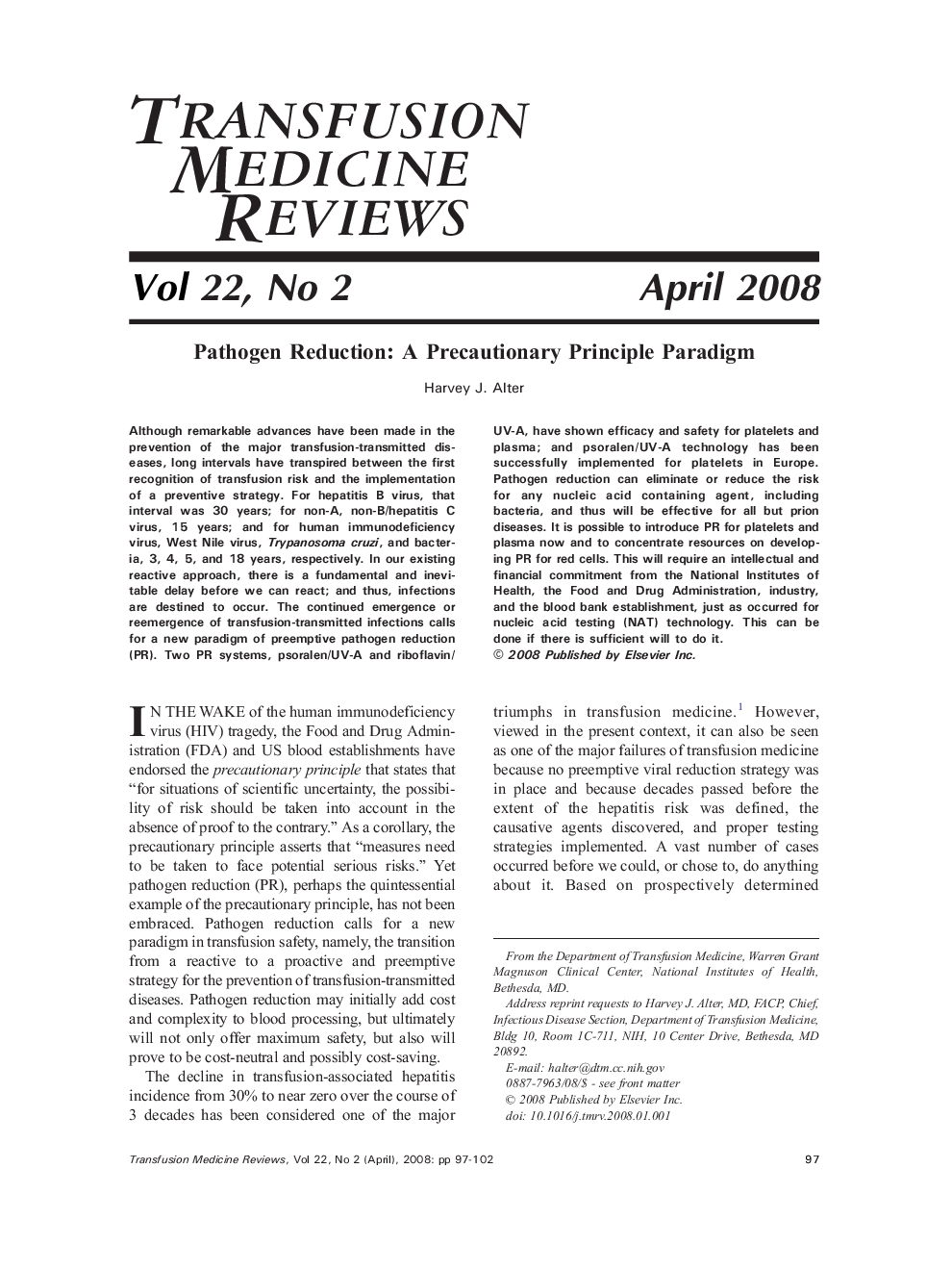| Article ID | Journal | Published Year | Pages | File Type |
|---|---|---|---|---|
| 3336883 | Transfusion Medicine Reviews | 2008 | 6 Pages |
Although remarkable advances have been made in the prevention of the major transfusion-transmitted diseases, long intervals have transpired between the first recognition of transfusion risk and the implementation of a preventive strategy. For hepatitis B virus, that interval was 30 years; for non-A, non-B/hepatitis C virus, 15 years; and for human immunodeficiency virus, West Nile virus, Trypanosoma cruzi, and bacteria, 3, 4, 5, and 18 years, respectively. In our existing reactive approach, there is a fundamental and inevitable delay before we can react; and thus, infections are destined to occur. The continued emergence or reemergence of transfusion-transmitted infections calls for a new paradigm of preemptive pathogen reduction (PR). Two PR systems, psoralen/UV-A and riboflavin/UV-A, have shown efficacy and safety for platelets and plasma; and psoralen/UV-A technology has been successfully implemented for platelets in Europe. Pathogen reduction can eliminate or reduce the risk for any nucleic acid containing agent, including bacteria, and thus will be effective for all but prion diseases. It is possible to introduce PR for platelets and plasma now and to concentrate resources on developing PR for red cells. This will require an intellectual and financial commitment from the National Institutes of Health, the Food and Drug Administration, industry, and the blood bank establishment, just as occurred for nucleic acid testing (NAT) technology. This can be done if there is sufficient will to do it.
